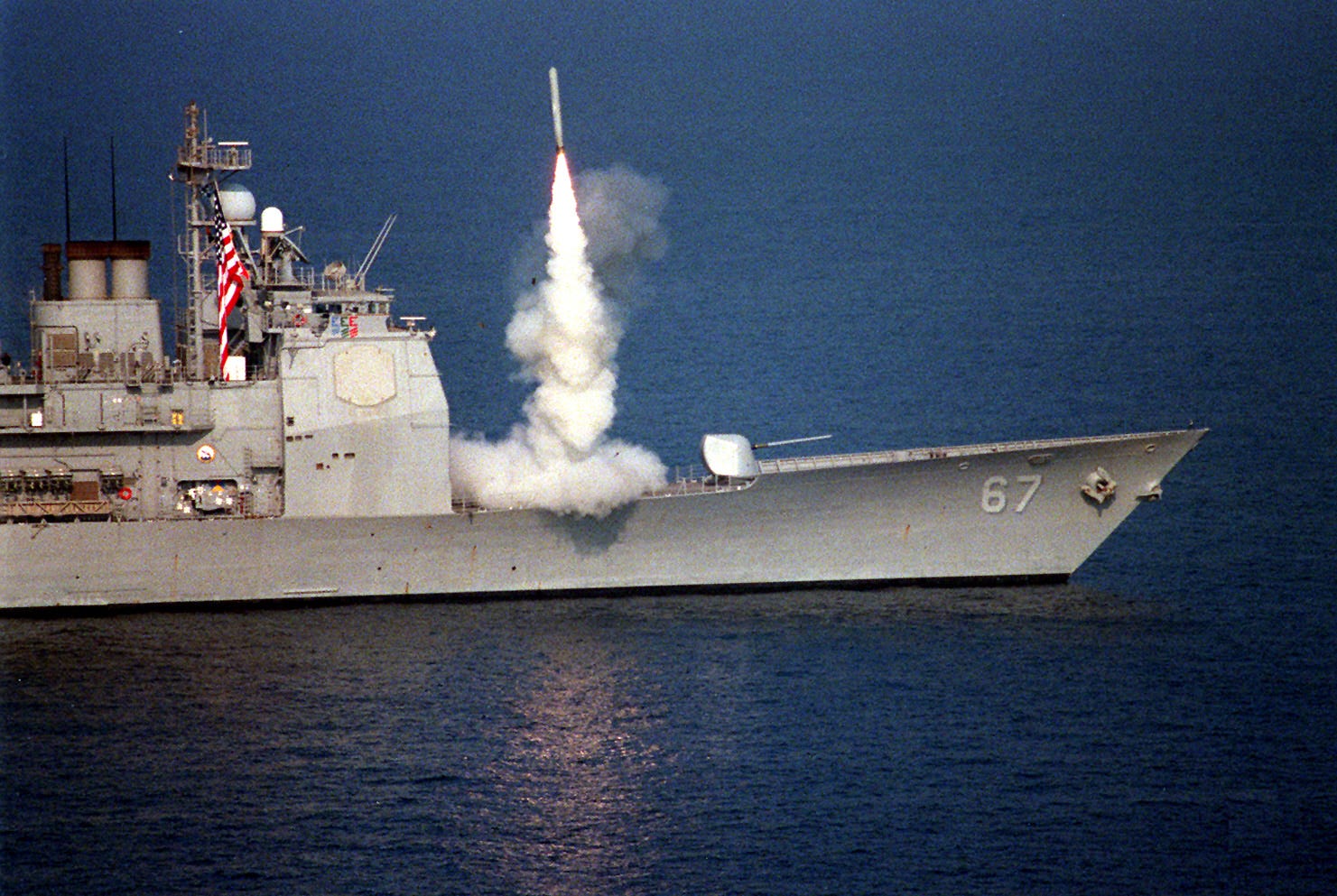by DAVID AXE
U.S. Troops Can Now Call in Tomahawk Cruise Missiles for Close Air Support
And that’s not the old munition’s only https://medium.com/war-is-boring/u-s-marines-can-now-call-in-tomahawk-cruise-missiles-for-close-air-support-2a8aa4a64428new trick
The U.S. military received its first Tomahawk cruise missile in 1983. And now 32 years later, American troops are still teaching the far-flying smart munition new tricks.
In a test on Jan. 29, a team of U.S. Marines called in an upgraded Tomahawk, called a “Block IV,” to quickly strike a nearby target—just like the Marines routinely do with their artillery, Harrier attack jets and Cobra helicopter gunships.
This is not what the Tomahawk normally does. By applying new software and procedures, the Marines have transformed the super-accurate missile with its 1,000-pound warhead into a close-support weapon—one they can dial up to blast the enemy during, say, fast-moving street-to-street fighting on some urban battlefield.
Meanwhile, the Navy is teaching the land-attack Tomahawk to also be an anti-ship missile.
This is a big, big deal. The U.S. military is getting powerful new weapons … without actually buying much new hardware.
The Pentagon keeps thousands of the million-dollar-apiece Tomahawks in stock—the precise number is classified. Mainly, the Navy launches them from submarines and surface ships to punch holes in enemy air defenses at the start of bombing campaigns. After all, there’s no pilot on board, so it’s no big deal if some of the Tomahawks get shot down.
Most recently, barrages of sea-launched Tomahawks opened up the air wars in Libya in 2011 and Syria in 2014.
 Traditionally, the cruise missile motors at low altitude, propelled by its turbofan engine over a distance of up to 1,000 miles. The early-model Tomahawks are “fire-and-forget” weapons that follow a pre-planned path, scanning the terrain below and comparing it to digital maps they keep stored in their memory to keep track of where they are.
Traditionally, the cruise missile motors at low altitude, propelled by its turbofan engine over a distance of up to 1,000 miles. The early-model Tomahawks are “fire-and-forget” weapons that follow a pre-planned path, scanning the terrain below and comparing it to digital maps they keep stored in their memory to keep track of where they are.
More recent versions of the Tomahawk can also home in on GPS coordinates. But for the missile’s first two decades, it was a pretty inflexible weapon. You had to plot its course days in advance. And once you pressed the launch button, the missile was beyond your control.
That began to change in the early 2000s, when the Navy started buying the easier-to-use Block IV edition of the missile from Raytheon. The Block IV has the ability to communicate with its launch vessel while in the air.
That means a ship’s crew can switch a Tomahawk’s target in mid-flight—or even launch a Tomahawk and tell it to fly in circles for a few hours near enemy territory, waiting to strike until someone spots a specific target and feeds the location to the missile.
The new-and-improved Block IV Tomahawk has inspired a lot of innovation. In 2011, the Navy and Air Force collaborated on a startling experiment over the China Lake bombing range in California. The Navy lobbed a Tomahawk into the air and an Air Force F-22 stealth fighter relayed data to the missile to guide the munition to its target.
And at China Lake on Jan. 27 this year, the Navy tested out the Block IV’s ability to hit a moving ship at sea.
The sailing branch maintained a few anti-ship Tomahawks back in the 1980s but got rid of them when it determined that it possessed no reliable way of steering the missiles many hundreds of miles to strike an enemy warship that’s constantly moving.
Instead, the Navy made do with short-range Harpoon anti-ship missiles—until the January test proved the latest Tomahawk could finally do the job of sinking a vessel.
The destroyer USS Kidd launched a Block IV Tomahawk. A Navy F/A-18E Super Hornet fighter spotted a drone target vessel and beamed the coordinates to a ground station, which then passed them to the cruise missile—all in near real time.
The Tomahawk smashed into the drone ship. “This demonstration is the first step toward evolving Tomahawk with improved network capability and extends its reach from fixed and mobile to moving targets,” Raytheonboasted in a press release.
Bob Work, the deputy secretary of defense, labelled the test Tomahawk “a 1,000-mile anti-ship cruise missile” and declared it “potentially a game-changing capability for not a lot of cost.”
And the experimentation continued. Two days after the anti-ship test, Marines on San Nicolas Island off the coast of Southern California radioed the destroyer Kidd with the coordinates of a mock enemy position. Kiddresponded by quickly firing a Tomahawk, taking advantage of the Block IV missile’s streamlined launch procedure.
“Using GPS navigational updates, the missile performed a vertical dive to impact on San Nicolas Island, scoring a direct hit on the target designated by the Marines,” Raytheon announced.
Now imagine combining all the Block IV’s new skills. Before a battle, the Navy could fire a bunch of the missiles into the air. They loiter until the ground troops get into trouble. The troops send GPS coordinates to any missiles hanging out nearby.
After just a few minutes, Tomahawks slam into the enemy forces—even if the bad guys are already on the move. The American troops sustain the assault, quickly ordering up additional Tomahawks until the enemy gives in.
It’s on-call, fast-reacting, robotic close air support. And unprecedented.
Three decades after the Tomahawk’s debut, Pentagon is still buying fresh copies of the drone munition—and could continue doing so for many years. Who know what other new tricks the old cruise missile might learn.
No comments:
Post a Comment